Senegal Top Green Buildings
Senegal is embracing sustainable architecture and eco-friendly construction practices, spearheaded by companies like DNA. These top green buildings showcase a commitment to environmental stewardship, energy efficiency, and innovative green building design.
With a focus on using raw earth bricks and solar power, Thiés-based design and construction company DNA is revolutionizing the construction industry in Senegal. Their sustainable approach to building not only reduces the environmental impact but also provides energy-efficient solutions.
Key Takeaways:
- Senegal is embracing sustainable architecture and eco-friendly construction practices.
- Thiés-based company DNA specializes in raw earth bricks and solar power, offering energy-efficient solutions.
- Green building design is at the forefront of sustainable architecture in Senegal.
- Senegal’s top green buildings contribute to energy efficiency and reduced environmental impact.
- These developments in eco-friendly construction are driving Senegal’s sustainable development goals.
The History of Senegal’s Architecture
Senegal boasts a captivating architectural history, shaped by influential figures like Léopold Sédar Senghor and characterized by unique architectural styles. One prominent architectural style introduced by Senghor is known as “asymmetrical parallelism,” featuring angular designs that have left a lasting impact on the architectural landscape of Senegal.
An excellent example of this distinctive architectural style can be found at the site of Senegal’s 1974 International Fair in Dakar. This historic site showcases the innovative use of angular architecture, which continues to captivate visitors with its striking visual appeal and symbolic representation of Senegal’s rich heritage.
In addition to Senghor’s contributions, the city of Thiés is home to the Manufactures Sénégalaises des Arts Décoratifs, a testament to Senegal’s commitment to showcasing African design. The Manufactures Sénégalaises des Arts Décoratifs highlights the country’s diverse tapestry of architectural influences and unravels the intricate story behind each artistic creation.
Senegal’s architectural history is a testament to the country’s artistic vision and cultural heritage, reflecting a harmonious blend of tradition and innovation.
Quote:
“Senegal’s architectural history is an emblem of the nation’s identity, showcasing our creativity and cultural diversity.” – Architect Amadou Fall
The Founding of DNA
Mariama Djambony Badji and Papa Mafall Diop, childhood friends from Thiés, came together in 2019 to establish Design Engineering Architecture (DNA), a pioneering construction company in Senegal. Despite studying civil engineering instead of architecture, their shared dream of building houses and creating a sustainable construction company drove them to establish DNA. Their unique approach focuses on using raw earth bricks and solar power, offering a more environmentally-friendly alternative to traditional construction methods. DNA has quickly made a name for itself in the industry, thanks to the innovative vision of its founders.
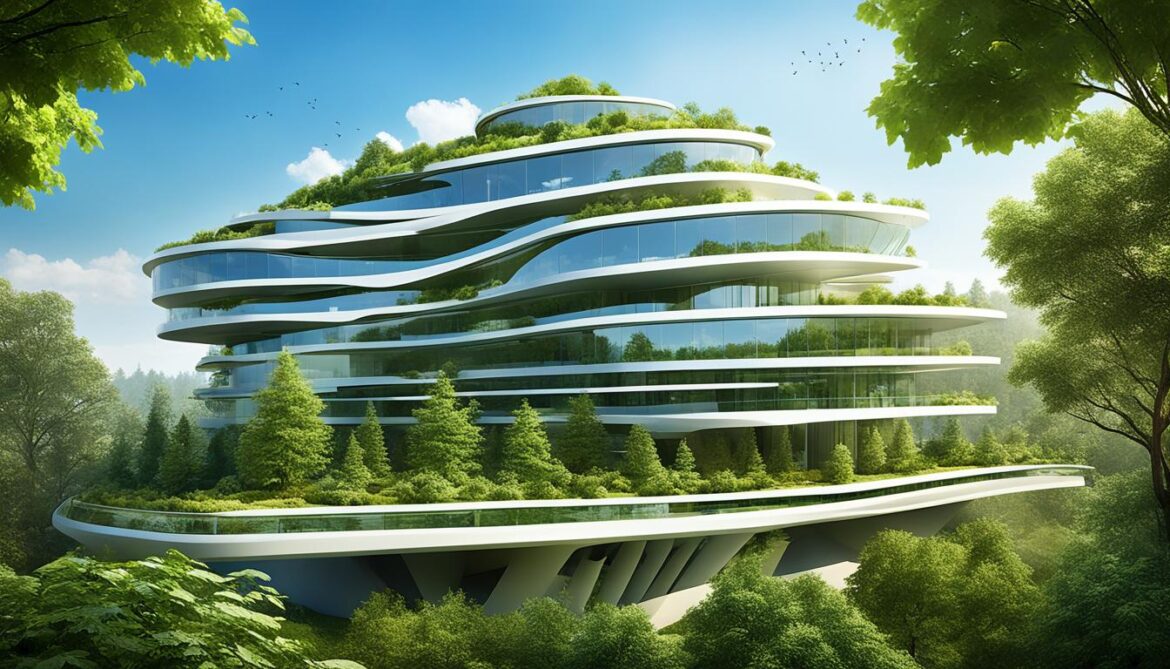
Through their childhood friendship, Mariama Djambony Badji and Papa Mafall Diop developed a deep appreciation for their local community and a desire to contribute to its growth. The creation of DNA allowed them to combine their passion for construction with sustainable principles. With the use of raw earth bricks and solar power, DNA aims to minimize the environmental impact of their projects while creating structures that are both functional and aesthetically pleasing. Their commitment to sustainability sets them apart in the construction industry and positions DNA as a leader in eco-friendly building practices in Senegal.
The Benefits of Raw Earth Bricks
Raw earth bricks, also known as rammed earth construction, have been utilized for centuries in iconic structures such as the Great Mosque of Djenné in Mali. This ancient building technique offers numerous advantages in terms of sustainability and energy efficiency.
Natural Insulation
One of the key benefits of raw earth bricks is their ability to provide natural insulation. These bricks have excellent thermal mass properties, which means they can absorb and store heat from the sun during the day and release it slowly at night. As a result, buildings constructed with raw earth bricks remain cool during the day and retain warmth during cooler nights without the need for excessive air conditioning or heating systems.
Carbon-Neutral Alternative
Raw earth bricks are also considered to be a carbon-neutral alternative to conventional concrete bricks. The manufacturing process of raw earth bricks involves sourcing local soil, which reduces the carbon footprint associated with transportation. The bricks are then compacted and stabilized using a mixture of soil, clay, and water, eliminating the need for energy-intensive firing processes. As a result, the production of raw earth bricks contributes to reduced carbon dioxide emissions, making it a more sustainable choice for construction.
“Raw earth bricks provide natural insulation, keeping buildings cool and reducing the need for air conditioning.”
Longevity and Durability
In addition to their energy efficiency and sustainability, raw earth bricks are also known for their longevity and durability. These bricks have a natural resistance to fire, pests, and weathering, ensuring that buildings constructed with raw earth bricks can withstand the test of time. This long-lasting quality reduces the need for frequent repairs and replacements, further reducing the environmental impact.
Visually Appealing
Raw earth bricks offer a unique aesthetic appeal to buildings. The natural color and texture of these bricks add a distinctive charm, complementing the surrounding environment. The organic appearance of raw earth construction can create visually stunning structures that blend harmoniously with nature.
To experience the benefits of raw earth bricks in action, look no further than the historic Great Mosque of Djenné in Mali. This architectural masterpiece showcases the durability, energy efficiency, and striking beauty of rammed earth construction.
| Benefits of Raw Earth Bricks | Summary |
|---|---|
| Natural Insulation | Keeps buildings cool, reducing the need for air conditioning. |
| Carbon-Neutral Alternative | Reduces carbon dioxide emissions, contributing to a more sustainable construction process. |
| Longevity and Durability | Withstands the test of time, reducing the need for frequent repairs and replacements. |
| Visually Appealing | Offers a unique and visually stunning aesthetic with natural color and texture. |
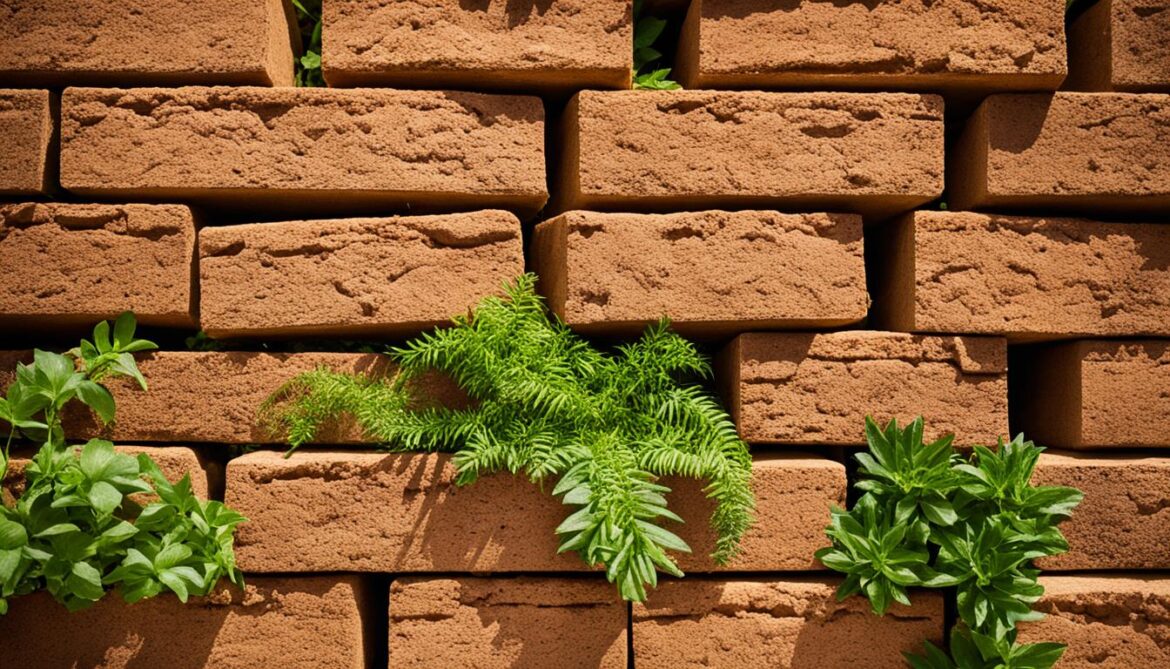
Overcoming Challenges in the Construction Sector
Entering the construction sector as a young and innovative company with a non-traditional approach is no easy feat. DNA faced numerous challenges in a male-dominated and traditionally-minded industry. Overcoming these obstacles required additional efforts and creative strategies to gain acceptance and credibility.
The construction sector has long been recognized as a male-dominated industry, with entrenched norms and practices that can be resistant to change. DNA had to navigate these barriers and break down stereotypes to establish themselves as a reputable and competitive player in the field.
“Being a non-traditional construction company, we had to work harder to gain the trust and respect of industry professionals,” says Mariama Djambony Badji, co-founder of DNA. “We often had to rely on our male colleagues to supervise construction crews, as some clients were more comfortable with that arrangement. But it motivated us to push even harder and prove that our unique approach and dedication to sustainability set us apart.”
Despite the challenges they faced, DNA’s commitment to their non-traditional approach paid off. Their innovative use of raw earth bricks and incorporation of solar power in their construction projects gained recognition and admiration in the industry. Over time, they earned the respect of their peers and clients, solidifying their position as leaders in sustainable construction.
By challenging conventional norms and breaking into a male-dominated industry, DNA has not only established their presence but has also paved the way for future non-traditional approaches in the construction sector. Their success serves as an inspiration for other aspiring companies looking to make a difference and instigate positive change within the industry.
DNA’s Impact on the Community
DNA is not just focused on constructing buildings; they are also dedicated to making a positive impact on the community. Through their projects, they actively involve the local residents and provide them with opportunities for employment. By employing and training these individuals in the techniques of raw earth construction, DNA creates a pathway for community members to develop valuable skills and secure green jobs in Senegal.
As trained workers, these individuals become part of DNA’s qualified raw earth workers database, ensuring a sustainable workforce that is well-equipped to contribute to future construction projects. This community involvement not only supports local residents but also promotes the growth of sustainable practices in the region, creating a greener and more prosperous environment.
“We believe that community involvement is crucial to building a sustainable future. By empowering local residents and creating green job opportunities, we aim to foster a sense of ownership and pride within the community. Together, we can create a greener, more sustainable Senegal.”
Furthermore, DNA utilizes social media platforms to raise awareness about the benefits of raw earth bricks and sustainable construction practices. Through educational content and engaging visuals, they educate the wider community on the environmental impact of their projects and inspire others to embrace sustainable building methods.
- Benefits of DNA’s community involvement:
- Empowers local residents
- Creates green job opportunities
- Fosters a sense of ownership and pride within the community
- Raises awareness about the benefits of raw earth bricks and sustainable construction
Impact of DNA’s Community Involvement
| Aspects | Benefits |
|---|---|
| Employment Opportunities | Improves local economy and reduces unemployment rates |
| Skills Development | Equips community members with valuable construction skills |
| Environmental Awareness | Spreads knowledge about sustainable construction practices |
| Community Pride | Fosters a sense of ownership and accomplishment |

DNA’s Projects and Clients
DNA has successfully undertaken a variety of construction projects, including private homes and buildings for NGOs. Known for their eco-friendly and sustainable approach, DNA’s dedication to using raw earth bricks and renewable energy solutions has attracted a diverse range of clients who prioritize environmentally conscious construction.
One notable client of DNA is an NGO that focuses on empowering women farmers. This organization required a building for fruit and vegetable processing that aligns with their commitment to sustainability. DNA’s solution provides a natural and environmentally friendly space that eliminates the need for air conditioning, ensuring a more energy-efficient operation for the NGO.
With their expertise in green construction practices, DNA continues to deliver exceptional results for their clients while making a positive impact on the environment.
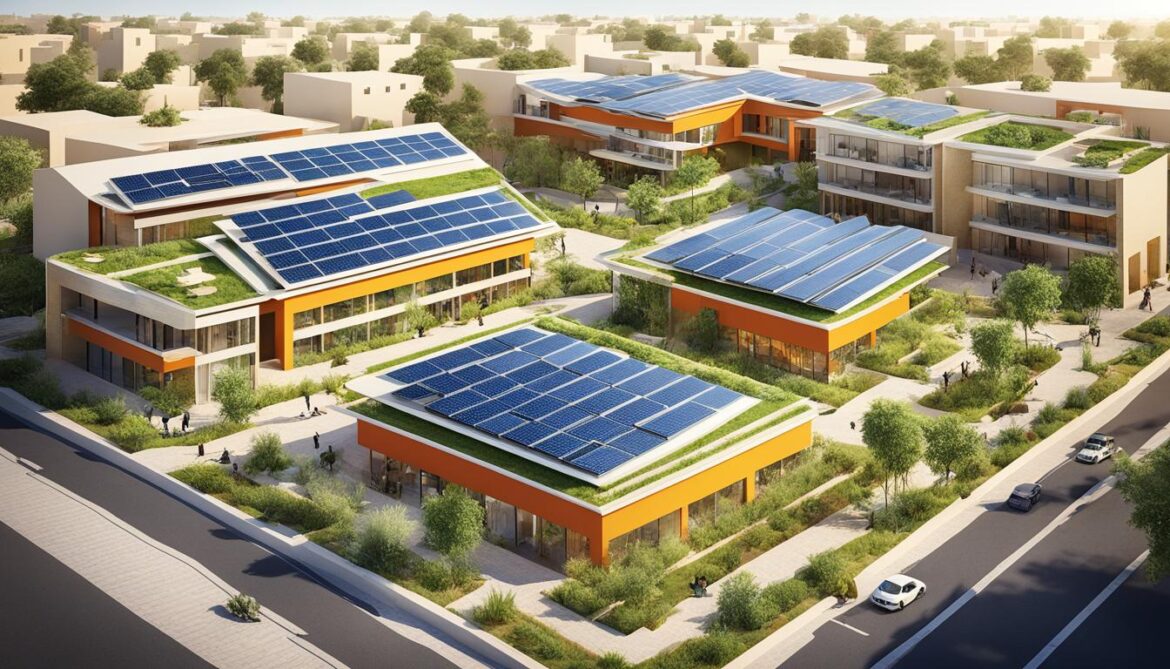
Projects and Clients Overview
| Project Type | Description |
|---|---|
| Private Homes | DNA has built several sustainable private homes, offering residents energy-efficient and environmentally friendly living spaces. |
| NGO Buildings | NGOs have selected DNA to construct their buildings due to the company’s commitment to sustainability and eco-friendly design principles. |
Expanding the Horizon of Sustainable Construction
While DNA has been successful in implementing raw earth construction, they are not limited to this technique. They are actively researching other sustainable and locally sourced alternatives to concrete. By exploring different materials and approaches, DNA aims to push the boundaries of sustainable construction and contribute to the broader adoption of eco-friendly practices in the industry.
Researching alternative materials is crucial for expanding sustainable construction practices. DNA recognizes the importance of finding innovative solutions that reduce environmental impact without compromising structural integrity or design aesthetics. This ongoing research allows DNA to stay at the forefront of sustainable architecture and construction, offering clients a diverse range of eco-friendly options.
One area of interest for DNA is exploring the use of recycled and renewable materials in construction. This includes materials such as bamboo, timber, and even recycled plastic. These alternatives have the potential to significantly reduce the carbon footprint of construction projects while also promoting the use of sustainable resources.
Another focus of DNA’s research is improving energy efficiency in buildings. They are exploring new technologies and design strategies to optimize energy usage and reduce reliance on non-renewable energy sources. This includes the integration of solar panels, energy-efficient lighting systems, and smart building management systems.
DNA’s commitment to research and innovation extends beyond material and energy efficiency. They also study ways to enhance the overall sustainability of buildings, such as incorporating rainwater harvesting systems, green roofs, and natural ventilation methods.
To illustrate the breadth of DNA’s research, here is a table showcasing some of the alternative materials they are exploring:
| Alternative Materials | Potential Benefits |
|---|---|
| Bamboo | Renewable resource, high tensile strength, fast growth rate |
| Timber | Natural insulation, carbon sequestration, sustainable forestry practices |
| Recycled Plastic | Diverting plastic waste from landfills, reducing carbon emissions from plastic production, lightweight and durable |
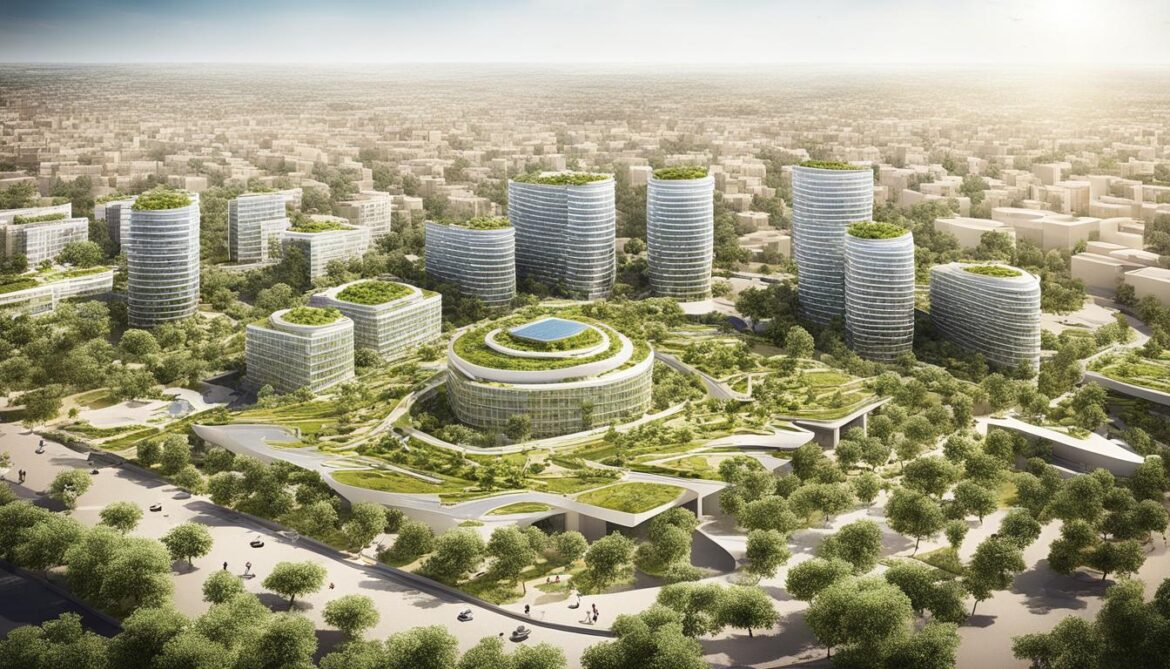
Through their dedication to research and exploration, DNA is making significant strides in expanding sustainable construction practices. By embracing alternative materials and innovative design approaches, they are helping to create a more environmentally conscious and resilient built environment.
Recognitions and Awards
Senegal’s commitment to sustainable construction is evident through the recognition and awards received by DNA. They have been awarded the EDGE green building certification for their sustainable housing developments, reducing energy consumption and carbon emissions. The certification was presented at a ceremony organized by the World Bank Group, the Government of Senegal, and the City Climate Finance Gap Fund.

With their dedication to environmentally-friendly construction practices, DNA has achieved the prestigious EDGE certification, affirming their commitment to sustainable housing. This recognition comes as a result of their efforts to reduce energy consumption and carbon emissions in their building projects.
| Certification Level | Project | Energy Savings (kWh/year) | CO2 Emissions Reduction (tons/year) |
|---|---|---|---|
| Platinum | Riverstone Apartments | 45,000 | 82 |
| Gold | Sunflower Residence | 32,500 | 68 |
| Silver | Mango Grove Villas | 22,800 | 49 |
The EDGE green building certification recognizes DNA’s notable achievements in energy efficiency and sustainable construction practices. It serves as a testament to their commitment to creating environmentally responsible housing solutions.
The Future of Green Building in Senegal
DNA’s success and the growing recognition of sustainable construction in Senegal indicate a promising future for green building in the country. As the government takes steps to promote sustainable development, such as transposing energy efficiency measures into law and introducing criteria for energy savings in buildings, the adoption of green building practices will play a crucial role in achieving Senegal’s sustainable development goals.
One key aspect of green building is the certification of buildings according to international standards. LEED certification, for example, ensures that buildings are designed and constructed with environmental sustainability in mind. The implementation of LEED certified buildings in Senegal will not only contribute to reducing carbon emissions but also enhance energy efficiency and promote responsible resource use.
Renewable energy systems are another important component of sustainable development. By harnessing the power of renewable energy sources such as solar, wind, and biomass, buildings can minimize their reliance on fossil fuels and reduce their environmental impact. Integrating renewable energy systems into the design and operation of buildings will contribute to a greener and more sustainable future for Senegal.
In today’s world, sustainable development is no longer a choice but a necessity. By prioritizing green building practices, Senegal can set an example for other nations, showcasing how sustainable architecture and construction can lead to a more resilient and environmentally conscious future.
The future of green building in Senegal holds great potential, not only in terms of environmental impact but also economic growth. The adoption of sustainable practices can create new job opportunities and stimulate local industries. This transition towards a greener built environment will not only benefit the present generation but also future generations, ensuring a more sustainable and prosperous Senegal for years to come.
Exploring Eco-Friendly Architecture in Senegal
DNA is not the only company paving the way for eco-friendly architecture in Senegal. This emerging sector is witnessing the rise of other companies, such as Elementerre and Worofila, who are also championing sustainable construction practices. One of the notable trends in the region is the increasing number of companies offering bioclimatic and ecological architecture, emphasizing the importance of eco-friendly design principles.
While eco-friendly architecture remains a niche sector, there is a growing interest in sustainable construction and a clear demand for energy-efficient buildings in Senegal. The benefits of eco-friendly architecture, such as reducing carbon emissions and promoting energy efficiency, have been recognized by both professionals and the general public.
“Eco-friendly architecture in Senegal goes beyond conventional practices, redefining the way we approach building design and construction. It represents a commitment to creating a sustainable and energy-efficient built environment.”
By using locally sourced materials and innovative design strategies, eco-friendly architecture in Senegal is making a positive impact on the environment and the overall quality of life. These energy-efficient buildings offer improved thermal comfort, reduce reliance on non-renewable resources, and contribute to a more sustainable future for the country.
Examples of Eco-Friendly Architecture in Senegal
Elementerre and Worofila are two prominent companies in Senegal that prioritize eco-friendly architecture in their projects. Both organizations have successfully constructed raw earth buildings, utilizing natural and locally available materials to create sustainable structures.
Elementerre focuses on sustainable urban development and has implemented renewable energy systems, rainwater collection, and effective waste management in their green building projects. Their commitment to eco-friendly design principles has earned them recognition as a leader in sustainable architecture in Senegal.
Worofila, on the other hand, specializes in bioclimatic design and has incorporated passive design strategies to optimize thermal comfort and reduce energy consumption. Their commitment to sustainability extends beyond construction, as they actively promote eco-friendly lifestyle choices and environmental awareness in their projects.
These companies, along with DNA, are collectively transforming the architectural landscape in Senegal by demonstrating that eco-friendly architecture is both achievable and economically viable.
The Impact of Eco-Friendly Architecture in Senegal
The increasing adoption of eco-friendly architecture in Senegal is creating a ripple effect in the construction industry and the broader community. It is not only providing innovative solutions to environmental challenges but also inspiring other developers and architects to embrace sustainable practices.
Moreover, eco-friendly architecture is attracting like-minded individuals who are passionate about sustainable living and the preservation of natural resources. This collaborative effort is fostering a sense of community and a shared vision for a greener future.
Comparison of Eco-Friendly Architecture Companies in Senegal
| Company | Specialization | Notable Projects |
|---|---|---|
| Elementerre | Sustainable urban development, renewable energy systems |
|
| Worofila | Bioclimatic design, passive design strategies |
|
| DNA | Raw earth construction, solar power |
|
The collective efforts of these companies are not only reshaping the architectural landscape but also contributing to sustainable development goals set by the Senegalese government.
Eco-friendly architecture in Senegal is a testament to the power of sustainable design and its potential to create a positive impact on the environment and the community. As the demand for energy-efficient buildings continues to grow, we can expect to see further advancements in eco-friendly architecture and a brighter future for sustainable construction in Senegal.
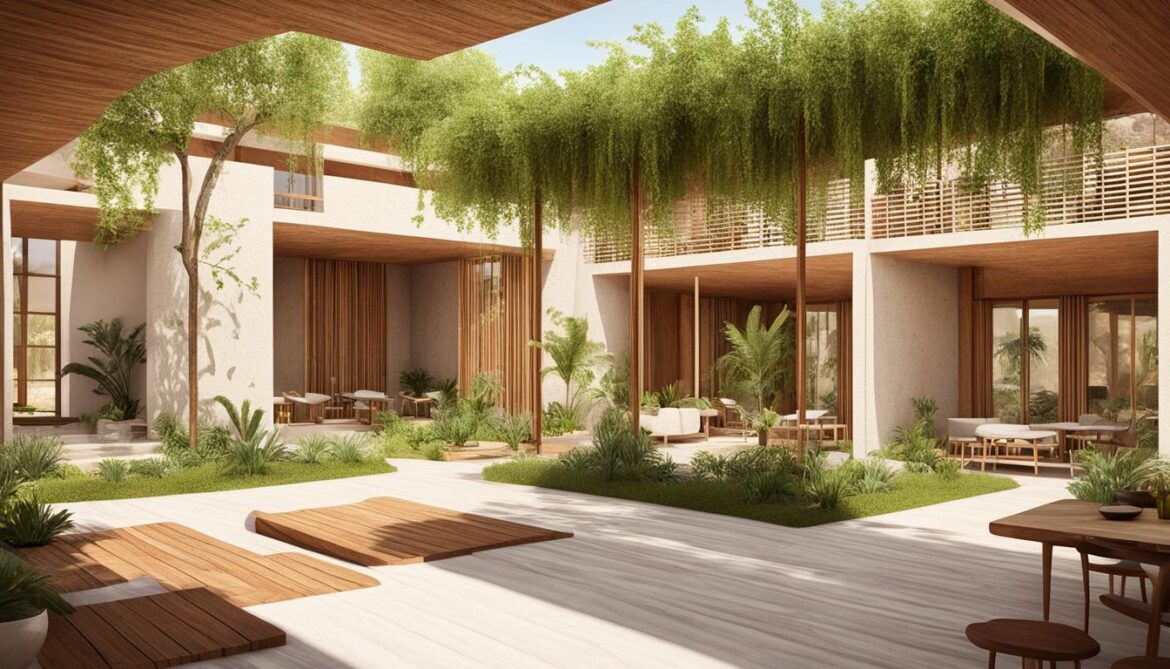
Conclusion
Senegal’s top green buildings, constructed by companies like DNA, are pioneers in sustainable architecture and eco-friendly construction. Through the use of raw earth bricks and renewable energy systems, these buildings achieve high levels of energy efficiency, significantly reducing carbon emissions and promoting a more environmentally friendly approach to construction.
The increasing recognition and support for sustainable development in Senegal indicate a promising future for green building practices. With ongoing efforts to transpose energy efficiency measures into law and promote the adoption of green building certifications such as EDGE and LEED, Senegal’s sustainable development goals are becoming more achievable.
As companies like DNA continue to lead the way, Senegal is witnessing the emergence of a niche sector focused on eco-friendly architecture and energy-efficient buildings. This growing interest in sustainable construction reflects the need for a more sustainable and resilient built environment, aligning with global efforts to combat climate change. With the country’s commitment to sustainable development, Senegal is poised to become a hub for green building practices in West Africa.
FAQ
What is the unique selling proposition of DNA?
What are raw earth bricks?
How does DNA contribute to the community?
What types of buildings has DNA constructed?
Is DNA limited to using raw earth bricks?
Has DNA received any certifications or awards?
What is the future of green building in Senegal?
Are there other companies in Senegal focused on eco-friendly architecture?
Source Links
- https://fox2now.com/business/press-releases/ein-presswire/657661079/senegals-first-green-built-homes-awarded-international-certification
- https://www.news24.com/fin24/climate_future/solutions/in-their-dna-this-startup-is-building-sustainable-houses-in-senegal-20230819
- https://www.aboutbird.africanofilter.org/post/this-women-led-startup-is-building-sustainable-houses-in-senegal





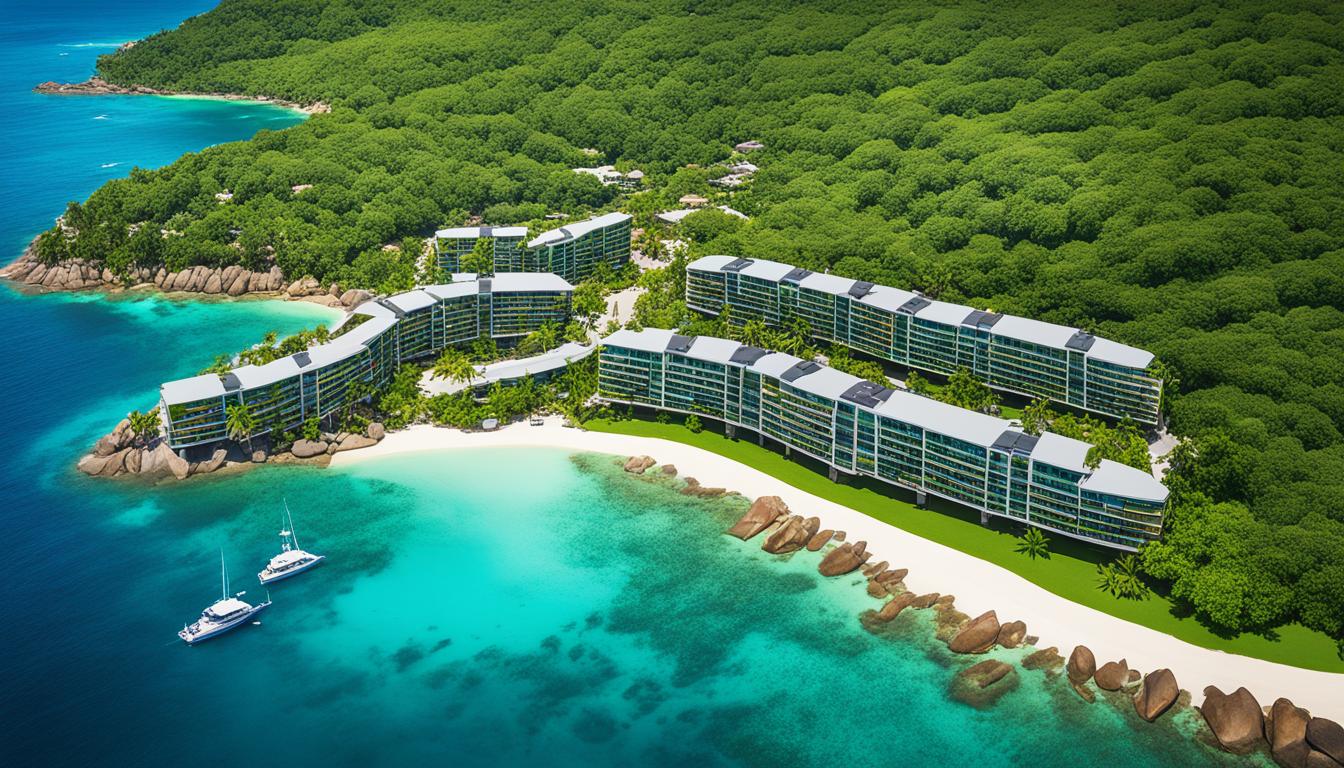

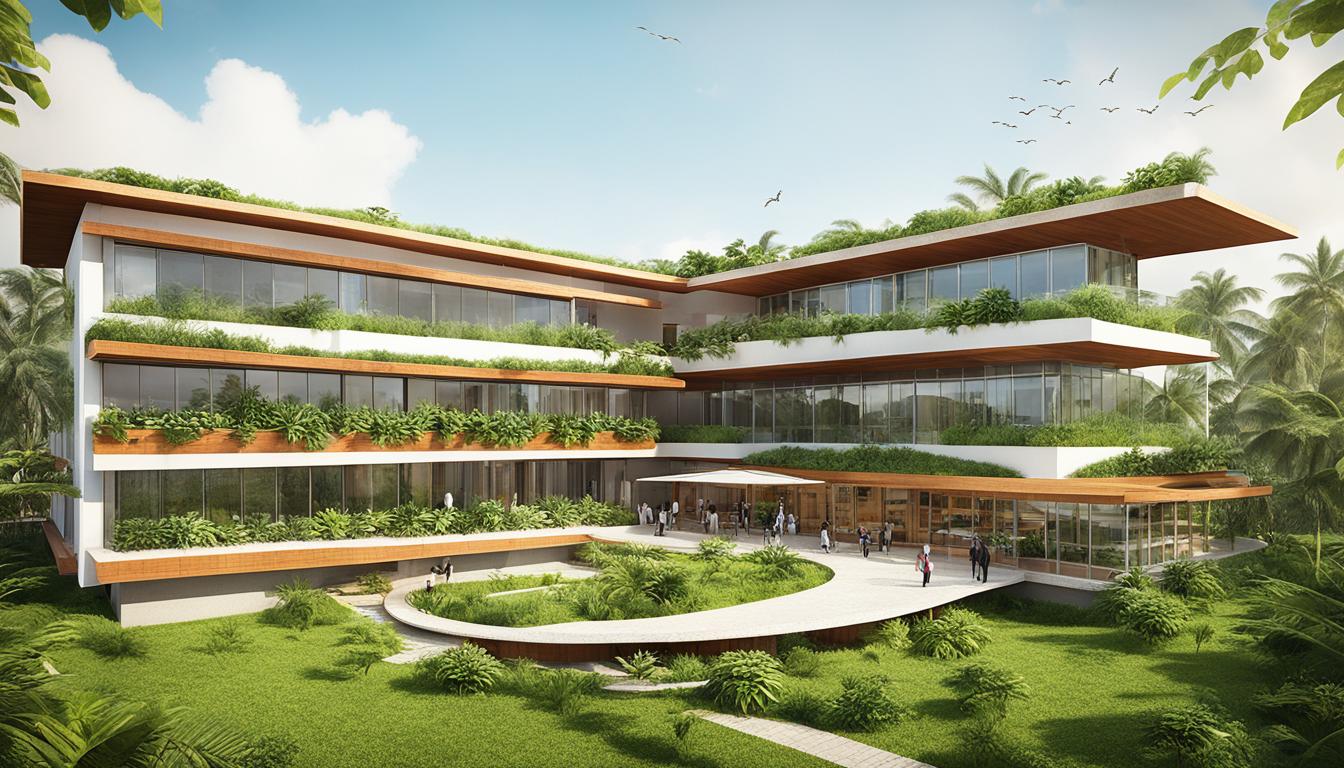

Niels Gudmund Holme
3 months agoJeg vil gerne i forbindelse med arkitektfirmaet DNA i Thiers i Senegal.
Kan I give mig deres e-mail adresse?
Jackie De Burca
3 months agoHi Niels,
https://dnasarl.com/#form_contact
On their website, you can find more information.
Email is – info@dnasarl.com
Thanks
Jackie